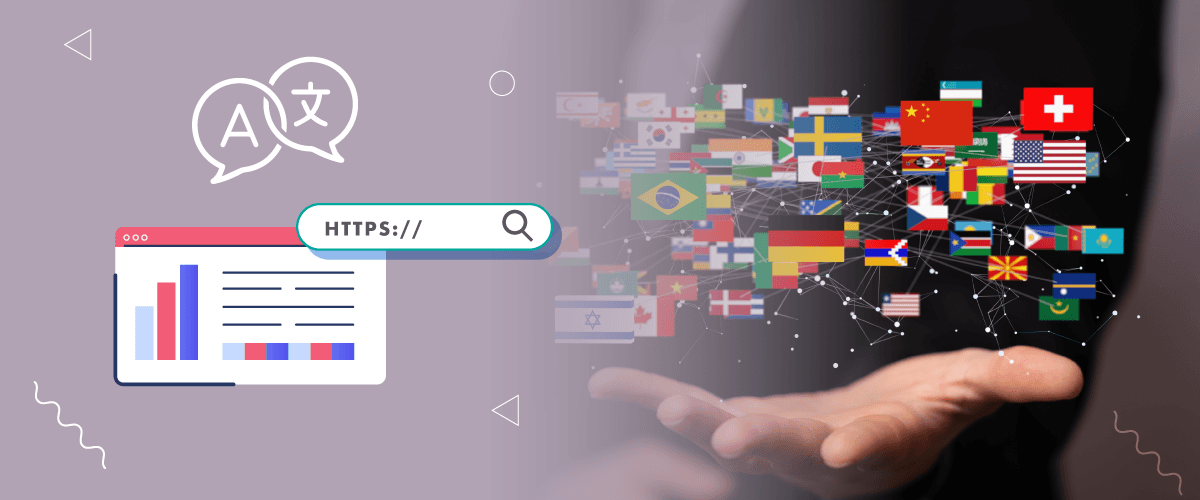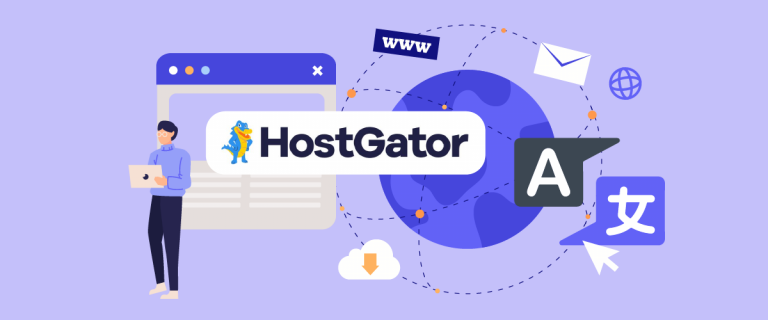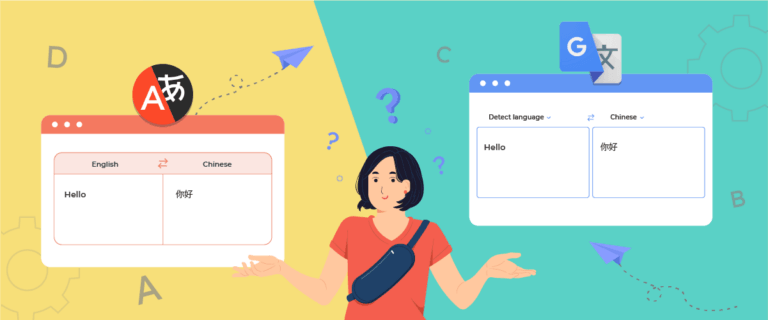In today’s global market, reaching out to customers in their language is key for business growth. Multilingual marketing isn’t just translation; it’s about adapting your message to fit different cultural contexts. This means changing the language and tailoring the content to resonate with each audience’s unique cultural background. Whether bilingual or in multiple languages, the goal is to create marketing that feels personal and relevant to each audience. This approach helps businesses connect more deeply with customers globally, opening up new markets and opportunities for expansion. As a business owner, adopting this strategy can be a crucial step in taking your business to the next level internationally. Let’s dive deep into how to start a multilingual marketing approach to expand your business!
What is multilingual marketing?
Multilingual marketing refers to creating marketing materials in multiple languages to effectively reach and engage target markets in different regions and cultures. It goes beyond simple translation, considering linguistic, cultural, and social nuances to ensure that marketing campaigns resonate with native speakers. A multilingual marketing strategy involves crafting content tailored to the preferences, needs, and expectations of users who speak different languages, forming a connection with potential customers across various cultures.
Benefits of a multilingual marketing strategy
Implementing a multilingual marketing strategy offers a range of benefits for businesses aiming to reach a wider audience and increase brand awareness. By expanding audience reach, enhancing brand credibility, improving search engine visibility, and strengthening customer experiences, multilingual marketing opens up new market opportunities, connects with consumers on a deeper level, and ultimately drives business growth.
Expanding audience reach
Reaching a global audience is essential for businesses looking to expand their market reach and tap into new markets. Here’s how multilingual marketing can help you reach a wider audience:
- Target new markets: By adapting your marketing campaigns to different languages-based target audiences, you can enter new markets and target audience segments previously out of reach.
- Reach a global audience: Multilingual marketing allows you to connect with internet users from different regions, cultures, and languages, enabling you to extend your marketing campaigns to a broader audience.
- Gain a competitive advantage: By tailoring your marketing materials to local languages, you can overcome language barriers and gain a competitive edge in different countries.
Enhancing brand credibility
Brand credibility is crucial for businesses operating in international markets or targeting diverse customer segments. Here’s how multilingual marketing can enhance brand credibility:
- Build trust and reputation: When marketing materials are available in consumers’ native languages, your brand values and respects their cultural backgrounds, building trust and reputation among diverse audiences.
- Strengthen brand awareness: Multilingual marketing enables you to consistently reach potential customers across different platforms, languages, and regions, increasing brand awareness worldwide.
- Connect with native language speakers: By engaging customers in their language, multilingual marketing helps foster a deeper connection with consumers, offering a better chance of resonating with their preferences and needs.
- Enhance brand recognition: Through multilingual content, your brand can establish itself as an authority in different regions, languages, and cultures, enhancing brand recognition.
Improving search engine visibility
Strengthening customer experiences
Creating content in multiple languages allows businesses to tap into new markets and expand their customer base. Additionally, multilingual marketing can improve a company’s search engine rankings in various languages, making it easier for potential customers to find them. Overall, implementing multilingual marketing strategies is a smart business move for companies looking to increase their reach and grow their brand on a global scale.
- Optimize multilingual content for search engine results: By applying multilingual SEO techniques, businesses can optimize their marketing content to rank higher in search results, increasing their visibility in different languages and regions.
- Expand keyword research for multilingual marketing content: Multilingual marketing involves conducting comprehensive keyword research for different languages, ensuring that marketing materials target the specific keywords and phrases that users search for in their native language.
- Improve search results in various languages and regions: Businesses can improve their search engine rankings in local and international markets by leveraging multilingual marketing, increasing website traffic and potential customers.
- Boost website visibility in different regions: Multilingual marketing helps businesses reach potential customers worldwide by making their website content accessible and relevant in different languages, thus boosting website visibility in various regions. Implementing these strategies can be particularly effective for companies using an AI video generator, as it allows them to create diverse and culturally relevant video content that appeals to a broader audience.
Providing exceptional customer experiences is at the core of business success. Here’s how multilingual marketing can strengthen customer experiences:
- Personalize customer support in different languages: By offering customer support in multiple languages, businesses can address the needs and concerns of customers in their preferred language, enhancing the overall user experience and satisfaction.
- Enhance user experience with multilingual website content: Multilingual marketing ensures visitors can access content and navigate the website seamlessly in their language, resulting in an improved user experience.
- Connect with global consumers: Multilingual marketing enables businesses to communicate and engage with consumers from different countries, breaking down language barriers and fostering deeper connections with global consumers.
- Tailor marketing materials to local audience preferences: By adapting marketing materials to different regions’ cultural and linguistic preferences, businesses can connect with consumers more personally, resulting in a more positive customer experience.
- Overcome language barriers: Multilingual marketing bridges the language gap, allowing businesses to communicate effectively with customers who may not be fluent in languages other than their own, resulting in a smoother customer experience.
Building an effective multilingual marketing strategy
Implementing a successful multilingual content marketing strategy involves understanding the target audience and creating valuable content. Tailoring digital marketing efforts to specific social media accounts, email marketing, and blog posts in the target language is crucial. Market research is vital in identifying cultural nuances and preferences, especially in targeting different countries. Creative translation is critical to resonating with different consumers, and analyzing campaign results helps optimize future strategies for the target country.
Localization of your website
Adapting website content to resonate with local audiences is a multifaceted process beyond simple translation. It involves customizing web content to align with diverse cultural norms and preferences. This might include modifying images and color schemes to reflect regional aesthetics or adjusting product descriptions to align with local market trends. For instance, a business might change the tone of its marketing copy to be more formal in cultures where formal communication is preferred or use local idioms and phrases to connect more authentically with the audience.
Localizing website navigation and design, user interface elements is also crucial. This could mean redesigning layouts to suit local browsing habits or providing region-specific customer support options. For example, a company might restructure its website layout to be right-to-left for audiences in Middle Eastern countries.
Customizing website design and content for different regions is vital for an effective multilingual content marketing strategy and digital marketing campaigns. This can be seen in practices like tailoring blog topics to address region-specific interests or concerns or creating location-based landing pages highlighting relevant products and services.
Crafting multilingual content marketing with localization in mind
Crafting content with localization in mind involves considering cultural and linguistic nuances and preferences for different markets. Adapting language, tone, and imagery to fit the targeted audience’s cultural context is crucial for effective localization. While translation technologies can be helpful, human translators are often necessary for accuracy and nuance. Implementing multilingual SEO strategies improves visibility in local search engines, and partnerships with local influencers or businesses can enhance reach and credibility in new markets.
- Implement multilingual A/B testing: Implementing multilingual A/B testing allows you to compare the impact of various marketing strategies in different languages. It helps identify which language resonates better with your audience, optimizing your marketing efforts and enhancing engagement across different markets. Through A/B testing, you can evaluate elements like headlines, call-to-actions, and imagery in different languages to determine the most effective approach for each target language. This testing translation strategic approach can significantly improve your campaign results and increase conversions in foreign markets.
- Promote cultural diversity: To effectively reach global audiences, a multilingual marketing strategy must consider cultural diversity. Promoting inclusivity can be achieved through localized images, cultural references, and language nuances. Avoiding unintentional offense or alienation requires cultural sensitivity training for marketing teams. Collaboration with local partners or influencers provides valuable insights into cultural preferences. Furthermore, celebrating cultural events or holidays through marketing campaigns shows diversity support, enhancing brand credibility and improving search engine visibility.
- Create original content for each language: Reaching global audiences relies heavily on original content for each language, adapting to local cultures and customs. Professional translators ensure accurate and culturally sensitive translations, fostering personal connections and brand loyalty. Utilize translation software and multilingual SEO to streamline the process and enhance results.
- Maintain brand consistency: Consistency across all marketing materials in multiple languages is vital. Utilize professional translation services for accuracy and cultural appropriateness. Develop a guideline outlining your brand’s tone and voice in each language. Adapt your strategy to local customs and cultures for better resonance. Engage global audiences in their preferred languages through social media and online communities.
Optimizing content for international SEO
Improving your website for international audiences goes beyond simply translating the content. It involves optimizing it to appear in search results across different countries. This requires creating content that resonates with each language group and using specific international SEO strategies for each market.
For instance, you need to research the popular and relevant keywords in each country and understand what people look for when using them. Moreover, measuring the average monthly searches for each keyword is crucial, focusing on regional search volumes instead of global ones. A popular keyword in Spain may not be as effective in Japan.
Another essential aspect is user intent. You need to understand what users intend to find when they search for a particular keyword, whether they’re looking for information or ready to make a purchase. The intent behind a keyword can vary significantly across regions.
Understand your global audience
To reach a diverse audience effectively, it is crucial to research their cultures, behaviors, and preferences. Translating marketing content and using localization techniques can ensure that cultural nuances are respected. Developing a strategy to reach the audience through preferred channels and continuously monitoring the approach based on feedback and performance metrics can drive engagement. Understanding the audience enables tailored communication, which ensures that multilingual content marketing strategies resonate with each target market.
Multilingual marketing approach across all channels
Implementing marketing strategies in multiple languages across every platform and medium your business uses to communicate with customers isn’t just about translating content into different languages; it’s about tailoring the marketing message to fit the cultural context and language nuances of each target audience. This could include:
- Social Media: Publishing posts in different countries tailored to each audience’s cultural contexts and preferences. For example, a post on an English-speaking Facebook page might use humor or references familiar to that audience, while the same post on a Spanish-speaking page might be altered to suit the tastes and cultural references of Spanish-speaking users.
- Email Marketing: Sending out newsletters and promotional emails in multiple languages, ensuring that the content resonates with each recipient group’s linguistic and cultural norms. This might involve segmenting your email list based on language preferences and customizing the message accordingly.
- Website Content: Offering a multilingual website where visitors can select their preferred language. This includes not just product descriptions and blog posts, but also customer service pages, FAQs, and translation checkout processes. Each version would be optimized for cultural relevance and linguistic accuracy.
- Advertising: Running ad campaigns on platforms like Google Ads or social media in multiple languages. This would involve creating separate ad copies and possibly different visuals that align with each target market’s cultural expectations and language.
- Customer Support: Support in various languages through live chat, phone support, or helpdesk tickets. This ensures that customers can receive assistance in their preferred language, enhancing their experience with the brand.
By adopting a multilingual marketing approach across all channels, a business can effectively engage with a diverse customer base, improve customer experiences, and increase its market reach globally. This strategy recognizes the importance of cultural sensitivity and linguistic accuracy in building solid relationships with customers worldwide.
Localize website for multilingual marketing with Linguise
Linguise is an automatic translation plugin for fast and efficient workflow, allowing businesses to create multilingual websites and reach a wider audience across various regions and social media platforms. The plugin offers automatic translation services and integrates with numerous CMS platforms, such as WordPress, Joomla, WooCommerce, Shopify, and over 40 other integrations, making it easier for businesses to select the most suitable platform.
To create a multilingual website using Linguise, follow the steps outlined below. This guide focuses on installing Linguise on WordPress, but other guides can be found in the Linguise documentation.
Register for the Linguise account
To get started, sign up for a Linguise account. You only need to provide your email and name and create a password without requiring a credit card. Once registered, you can access Linguise’s features, including multilingual SEO, front-end live editor, global translation exclusion, and other advanced functionalities.
Add domain website to Linguise
Once you have created a Linguise account, you can add the website domain for which you want to translate pages. To do this, log in to your account and access the dashboard. From there, select the “Add domain” option. When adding a domain, you will be asked to provide some important details, such as the website URL, your account information, the platform you are using, and the language you want to add. Once you have entered all the necessary information, click on “Next Step” to proceed.
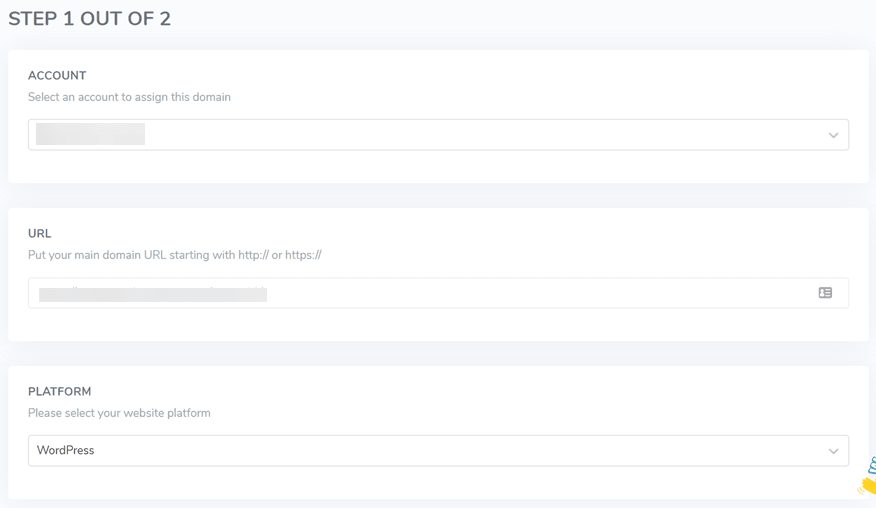
Activate API key
Choose the newly added domain, at which point a window similar to the one below will pop up. Then, choose the option to copy to the clipboard. Following this, if you opt for the WordPress platform, access your WordPress web dashboard and add the Linguise plugin by selecting the “Add plugin” menu. Subsequently, select the installed Linguise plugin and paste the previously copied API key, then click “Apply.” If successful, the website will be automatically translate

Setup the language switcher
After connecting the API, setting up a language switcher is the next step. You can do this on WordPress or in the Linguise dashboard. If you set it up on the dashboard, go to Settings > Language flags display. You can then select the position of the switcher and choose between dropdown, pop-up, or other forms. Additionally, you can decide whether to use short or full language names. Once you have selected, click Save to apply the changes, view the language switcher, and display the flag on your website. This feature is important in enabling users from different regions to access your website in their preferred language, improving user experience, and increasing engagement rates.
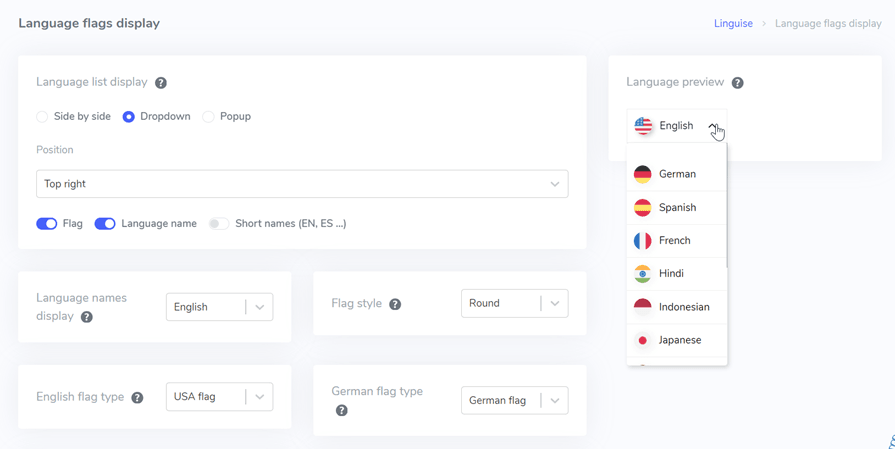
Website ready to translate
If the language switcher is active and the API key is connected, it will appear on the website. You can translate the site from the default language, English, to another language.
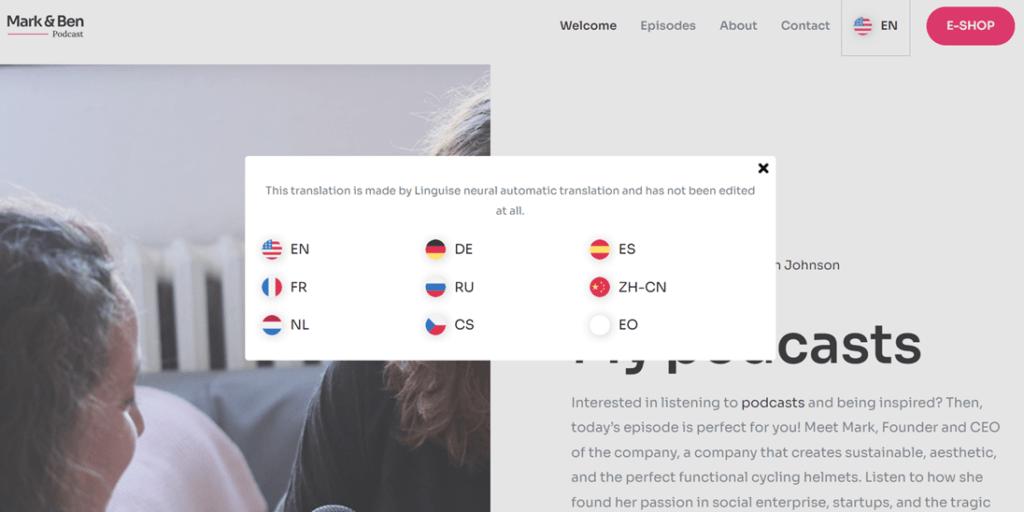
Successful multilingual marketing examples
These examples website multilingual marketing showcase effective content marketing strategies, enhancing brand visibility and engagement across diverse global markets.
Airbnb's multilingual marketing strategy
Airbnb’s approach to multilingual marketing involves a variety of key strategies that have helped them reach global audiences. Here are some of the key points to keep in mind:
- Airbnb translates its platform into 62 languages, allowing it to offer a localized experience to users worldwide.
- They employ local teams to create culturally relevant content that resonates with each market. This helps to build trust and credibility with users in each region.
- Machine learning is used to personalize user recommendations, which helps to create a more personalized experience for each user.
- They partner with local influencers to help spread the word about their platform and build relationships with users in each market.
- By leveraging its platform in the target language and tailoring marketing efforts to specific regions, Airbnb has effectively engaged diverse audiences and demonstrated the power of multilingual digital marketing.
Airbnb has achieved significant growth in global markets through these strategies, showcasing the impact of a well-executed multilingual content marketing strategy. By following these key points, businesses can learn from Airbnb’s success and improve their own multilingual marketing efforts.
Coca-Cola's global approach
Coca-Cola’s approach prioritizes local relevance and cultural sensitivity, tailoring marketing campaigns to diverse audience preferences. The company frequently uses language-specific advertisements, slogans, and packaging to connect with consumers. Additionally, they engage multilingual audiences through social media and digital platforms. These strategies have enabled Coca-Cola to maintain a strong global presence for over a century, showcasing the effectiveness of a well-executed multilingual content marketing strategy that resonates with global audiences.
- Prioritizing local relevance and cultural sensitivity
- Tailoring marketing campaigns to diverse audience preferences
- Using language-specific advertisements, slogans, and packaging to connect with consumers
- Engaging multilingual audiences through social media and digital platforms
By implementing these strategies, Coca-Cola has resonated with global audiences and established themselves as a recognizable brand worldwide.
Dove campaign strategy
Dove’s “Real Beauty” campaign is an excellent example of how multilingual marketing strategies can help businesses reach global audiences. Here are some key points to consider when implementing such strategies:
- Localization is key: Dove’s campaign resonated with diverse cultures and languages through localized versions. Adapting content to local cultural norms and language nuances is crucial to building consumer trust and loyalty.
- Partner with local influencers: Dove also partnered with local influencers to promote their message. This helped them connect with consumers more personally and build credibility in foreign markets.
- Embrace diversity: Dove’s campaign embraced diversity, which helped them capture the attention of a global audience. In today’s world, consumers are increasingly looking for inclusive brands that promote diversity.
- Speak to consumers in their native language: By speaking to consumers in their native language and cultural context, Dove was able to engage with consumers worldwide effectively.
Overall, Dove’s multilingual content strategy successfully catered to various linguistic and cultural needs, resulting in impactful campaign results. Businesses looking to expand their reach globally should take note of these key points to create their successful multilingual marketing strategies.
McDonald’s global marketing
McDonald’s, a globally recognized brand, has set the standard for implementing multilingual marketing strategies worldwide. The company’s success lies in adapting its slogans and menu items to suit different languages and cultures. In addition to offering rice meals in China and vegetarian options in India, McDonald’s also leverages social media platforms in various languages to connect with customers globally.
- To further emphasize the importance of a strong multilingual content strategy, we have compiled key points as follows:
- Multilingual marketing strategies increase brand visibility and engagement with diverse global audiences.
- Adapting slogans and menu items to suit different languages and cultures is crucial for success in international markets.
- Offering diverse options, such as vegetarian meals or halal options, can attract more customers and drive sales.
- Social media platforms provide a cost-effective way to connect with international customers and showcase your brand’s multilingual capabilities.
- Multilingual content can also help build customer trust by demonstrating your commitment to inclusivity and diversity.
McDonald’s is an excellent example of how adapting to different languages and cultures can enhance brand visibility and customer engagement. By following these key points, businesses can effectively reach global audiences and increase their chances of success in international markets.
Disney international campaign
Disney’s global success is attributed to its range of multilingual marketing campaigns designed to resonate with diverse audiences. Disney International effectively engages with local communities by incorporating localized language, culture, and customs. They also employ targeted strategies to reach specific demographics in each region, contributing to their status as one of the most beloved and recognized brands globally. Disney’s approach exemplifies the power of a multilingual content marketing strategy in reaching and captivating a global audience. Here are the key points to consider when devising multilingual marketing strategies for global audiences:
- Incorporate localized language, culture, and customs into your marketing campaigns to effectively engage with local communities.
- Employ targeted strategies to reach specific demographics in each region, considering factors such as age, gender, and lifestyle.
- Use social media platforms to connect with audiences globally and tailor your messaging accordingly.
- Offer multilingual customer support to accommodate the needs of diverse audiences and foster positive relationships.
- Partner with local influencers and media outlets to gain credibility and reach new audiences.
- Continuously analyze and adjust your multilingual marketing strategies to remain relevant and effective.
Multilingual Marketing: reach foreign-language audiences
The future of multilingual marketing is promising. It opens new markets, engages global audiences, and drives business growth. Multilingual marketing also significantly impacts customer support and can be a strategy for international business expansion. Embrace the potential of multilingual marketing to reach global audiences. Reaching foreign-language audiences through multilingual marketing is crucial for global business expansion.
Professional translation tools ensure accurate and effective communication, while localization resonates with target audiences in their native language. Ensure you use automatic translation tools that support multilingual SEO to boost website ranking in different languages, enhancing online presence. Multilingual marketing looks promising and easier with the rise of AI and machine learning, offering great potential for businesses to connect with international markets.

